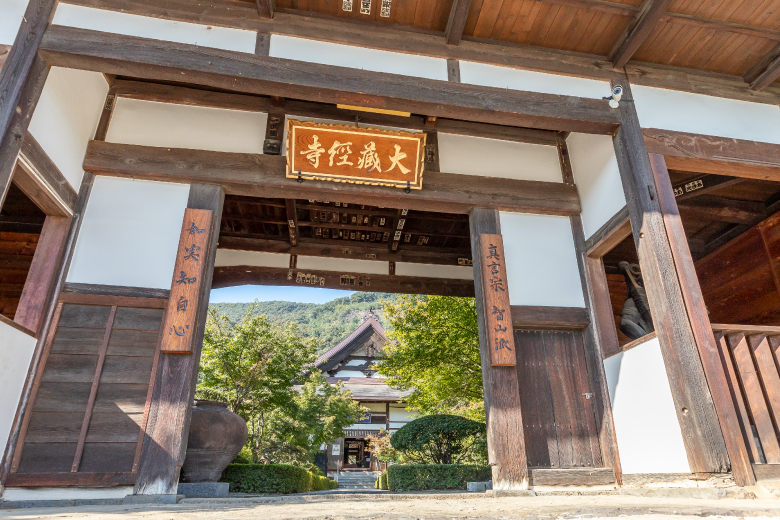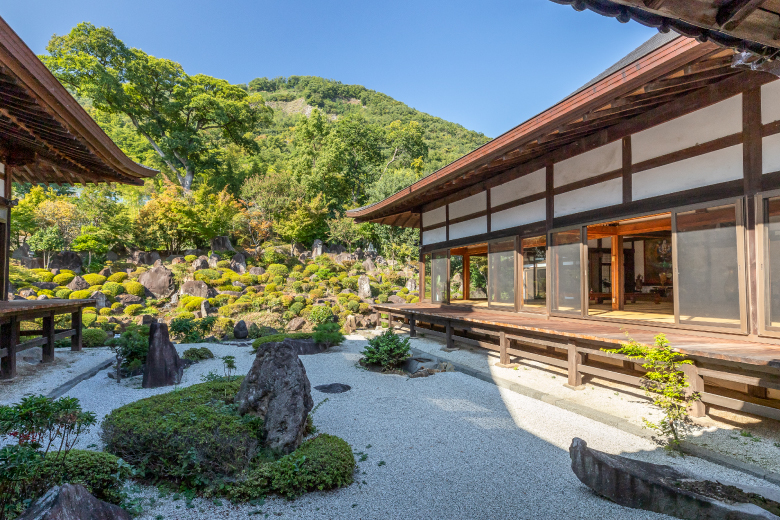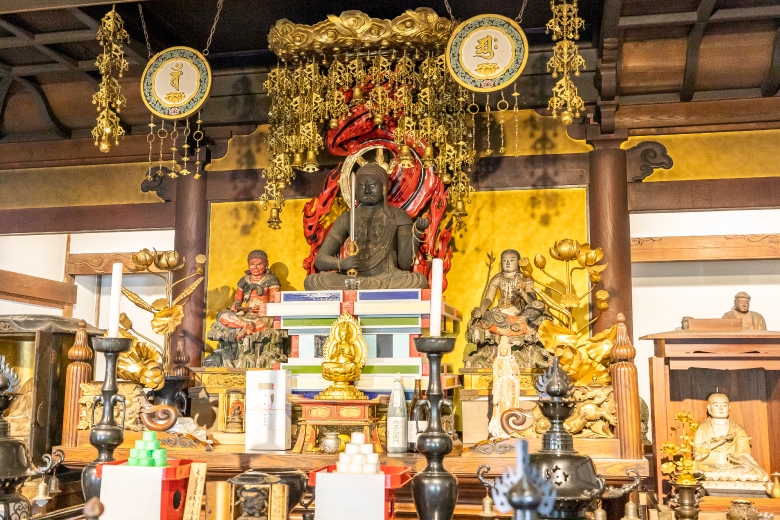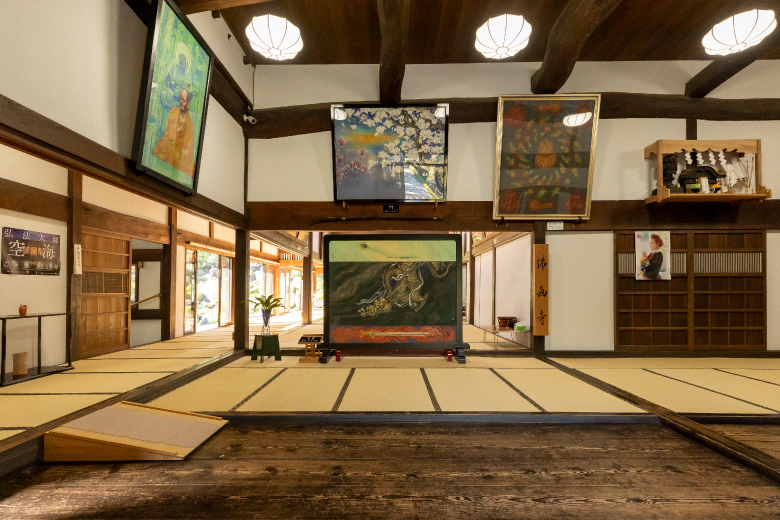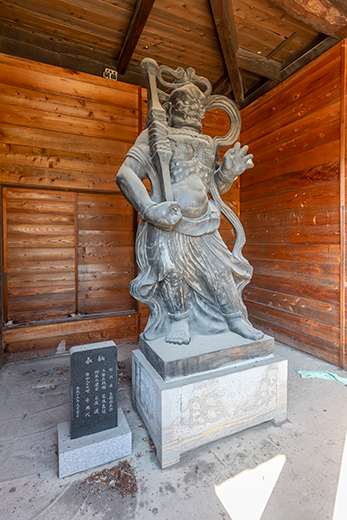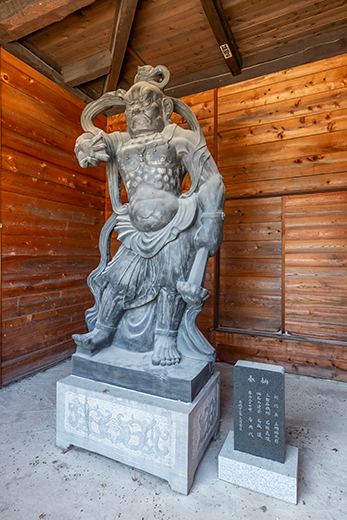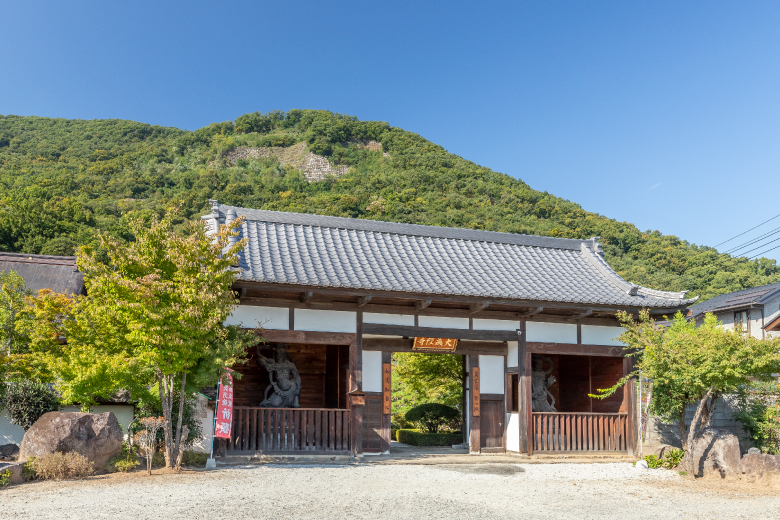Daizokyo-ji Temple is an ancient temple said to be built in 722 during the Nara Period (710-794) with the priest Gyoki as its founding priest. Ashikaga Yoshimitsu ordered Takeda Nobunari, military governor of Kai Province, to build a temple complex prior to his son Kando Shonin’s commencement of ascetic training in 1370. The temple got its name from the fact that Nobunari dedicated a complete collection of Buddhist canons called Daizokyo to the temple’s five-story pagoda. From then, Daizokyo-ji Temple became the Takeda Clan’s prayer temple, and still houses the Shogun Jizo that was the guardian deity of the clan.
The shrine was restored by the Tokugawa Clan in the Edo Period (1603-1868), and the Sanmen Daikokuten considered to be Tokugawa Ieyasu’s personal Buddhist image he kept near at hand and a Gongendo Zushi altar case still remain in the temple today. Because the temple’s location corresponds to the inauspicious northeastern direction from Kofu-jo Castle,it is said that the castle keeper of Kofu-jo Castle offered a prayer for the safety of the Tokugawa army on the 17th of every month.
The temple was besieged by fire numerous times since its founding, beginning with the 1516 Battle of Manriki in which Takeda Nobutora fought against the Suruga army. The complex that exists today was rebuilt between the Tenpo Years (1831-1845) and Ansei Years (1855-1860). Among the many cultural properties housed in the temple, four items, including a Buddhist painting offered by Kando Shonin, are designated Cultural Properties of Yamanashi Prefecture, and the Kenponchakushoku Nehanzu painting dating from the Muromachi Period (1336–1573) is a nationally designated Important Cultural Property (all are closed to public viewing).
Mount Daizokyojiyama, named after Daizokyo-ji Temple, rises behind the temple and is one of the “Hundred Mountains of Yamanashi.” A trailhead can be found behind Mononobe-jinja Shrine which stands in the precincts of the temple.
The shrine was restored by the Tokugawa Clan in the Edo Period (1603-1868), and the Sanmen Daikokuten considered to be Tokugawa Ieyasu’s personal Buddhist image he kept near at hand and a Gongendo Zushi altar case still remain in the temple today. Because the temple’s location corresponds to the inauspicious northeastern direction from Kofu-jo Castle,it is said that the castle keeper of Kofu-jo Castle offered a prayer for the safety of the Tokugawa army on the 17th of every month.
The temple was besieged by fire numerous times since its founding, beginning with the 1516 Battle of Manriki in which Takeda Nobutora fought against the Suruga army. The complex that exists today was rebuilt between the Tenpo Years (1831-1845) and Ansei Years (1855-1860). Among the many cultural properties housed in the temple, four items, including a Buddhist painting offered by Kando Shonin, are designated Cultural Properties of Yamanashi Prefecture, and the Kenponchakushoku Nehanzu painting dating from the Muromachi Period (1336–1573) is a nationally designated Important Cultural Property (all are closed to public viewing).
Mount Daizokyojiyama, named after Daizokyo-ji Temple, rises behind the temple and is one of the “Hundred Mountains of Yamanashi.” A trailhead can be found behind Mononobe-jinja Shrine which stands in the precincts of the temple.
COURSE MAP
Let's go to the next spot!
- 100m / 1min by bicycle / 1min on foot
- 02Mononobe-jinja Shrine
